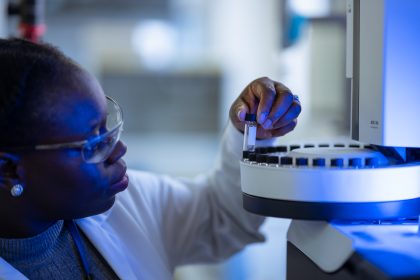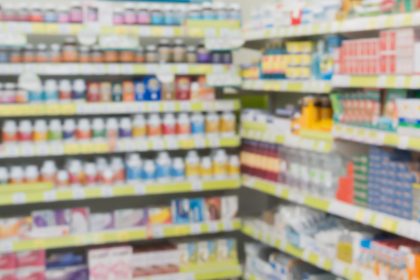What is Modified Atmospheric Packaging Testing?
Modified Atmospheric Packaging (MAP) testing is the process of verifying and validating that the atmosphere inside a sealed package, i.e., the composition of gases such as oxygen (O₂), carbon dioxide (CO₂), nitrogen (N₂) and/or water vapour, is at the correct level and remains stable over time. Essentially, the package is flushed or sealed under a controlled gas mixture (or with oxygen removed) to optimise shelf-life, and testing ensures that:
- The headspace gas composition is as intended;
- The package environment remains within defined tolerances for the product’s stability, performance or shelf-life.
In pharmaceutical or medical device contexts, MAP testing may involve verifying that oxygen-sensitive APIs, moisture-sensitive formulations or package fills are protected by the modified atmosphere in the packaging.
What are the benefits of Modified Atmospheric Packaging in Pharma?
Using Modified Atmospheric Packaging brings a number of benefits to pharmaceutical products, including:
- Reduced exposure to oxygen and moisture: Many pharmaceutical formulations (powders, tablets, biologics, blister-packs) are sensitive to oxygen or moisture ingress, which can degrade the API, reduce potency or affect stability. MAP helps to displace or reduce oxygen and/or humidity inside the package.
- Extended shelf-life and improved stability: By creating an optimal internal atmosphere, degradation processes (oxidation, hydrolysis, microbial growth in some cases) can be slowed — leading to longer shelf-life or more robust stability performance.
- Enhanced product protection during storage & transport: Particularly for sensitive products, MAP supports better protection while in transit, in varying climates, or with extended distribution chains (important in pharma global supply). For example, reducing residual oxygen or moisture ingress helps maintain product integrity until use.
- Reduced need for additional chemical preservatives or protective agents: In some packaging scenarios (especially food, but also pharma/medical devices) MAP can reduce reliance on added preservatives by controlling the environment.
- Better assurance of package integrity and gas environment as part of quality control: MAP requires rigorous QC of the gas composition which aligns with good manufacturing practice (GMP) and regulatory expectations in the pharmaceutical industry
Butterworth’s involvement in MAP Testing
Butterworth Laboratories has a long history of analysing gases, dating back to the first half of the 1990s. Modified Atmosphere Packaging (MAP), a technology used to control the composition of gases surrounding a product and extend its shelf life, originated in the food industry during the 1970s–1980s.
However, its adoption in the pharmaceutical industry came later, as the technology was adapted for sensitive drug formulations and biologics that required protection from oxygen, moisture, and microbial contamination. By the early 2000s, the first large-scale commercial pharmaceutical uses of modified atmosphere packaging (MAP) appeared, and by the 2010s, MAP techniques had become more standardised and integrated into Good Manufacturing Practice (GMP) environments for packaging biopharmaceuticals, vaccines, and advanced formulations. The most usual gas used to replace air in MAP production is ultra-pure nitrogen.
Butterworth Laboratories has responded to these milestones as required to meet our clients’ needs. We now have a wealth of experience with various products, including septum-capped containers, pressurised gas cans, blister packs, snap-ampoules, foil/plastic sachets, infusion bags, and other medical devices containing nitrogen-purged headspace. Two main analytical technologies have been employed: oxygen probe systems and gas chromatography (GC). Oxygen probe instruments, which operate using paramagnetic or zirconium cells, offer advantages in cost and turnaround time.
Oxygen probe instruments produce reliable and repeatable results; however, in practice, if you exceed the manufacturer’s specifications, a sample size greater than 1.2 litres is required for accurate results. Instruments such as the Servomex utilised at Butterworth are perfectly suited to the analysis of the contents of pressurised containers. While the onboard paramagnetic cell can be used to determine levels ranging from 0.1 to 100% oxygen, for low levels, especially in parts per million (ppm), the zirconium cell must be used for reliable results.
Where only small volumes of sample are available, such as is the case with blister packs, GC with Thermal Conductivity Detection (TCD) is required. Butterworth has validated several such procedures using μL injection volumes and is capable of obtaining results at ppm levels. Butterworth also has a novel validated in-house GC-TCD procedure that gives reliable results, which are truly independent of injection volume and pressure.
A new acquisition at Butterworth is a Shimadzu Nexis 2030 GC equipped with a Barrier Ionisation Discharge Detector (BID), which reduces the obtainable sensitivity for GC analysis by almost an order of magnitude compared to traditional GC-TCD. Butterworth Projects Department has already carried out validation work using BID. It is of note that Shimadzu was responsible for the development of the BID for GC in the early 2000s.
Frequently Asked Questions
Yes. While our MAP testing primarily focuses on nitrogen-purged systems, in principle, any non-corrosive gas can be analysed. The suitability of a particular gas will depend on its chemical properties and compatibility with the analytical instrumentation.
Yes. Butterworth Laboratories can measure both the overall oxygen content and trace oxygen contamination at parts-per-million (ppm) levels in various gas matrices, ensuring both compliance and product integrity.
Yes. Where sample volume allows, duplicate or replicate analyses can be performed on a single blister to confirm precision and repeatability of the measurement. This is particularly valuable for small-headspace containers where analytical verification is critical.
Yes. The Servomex probe is fully verified before use, and calibration checks are performed intermittently throughout each analytical sequence. This ensures ongoing accuracy and reliability during the measurement process.
Absolutely. Butterworth Laboratories offers full validation services for both probe-based and gas chromatography (GC) methods. For project-specific requirements and quotations, please contact the Butterworth projects department.


